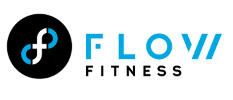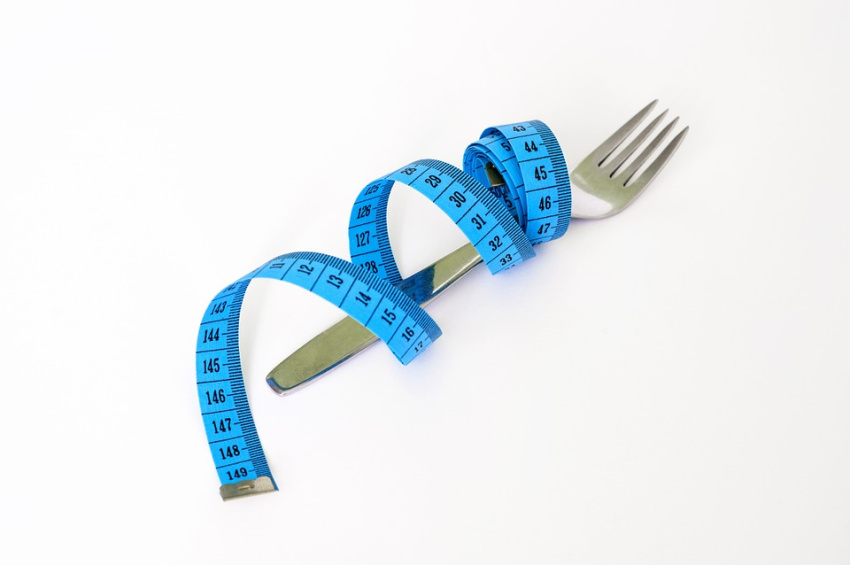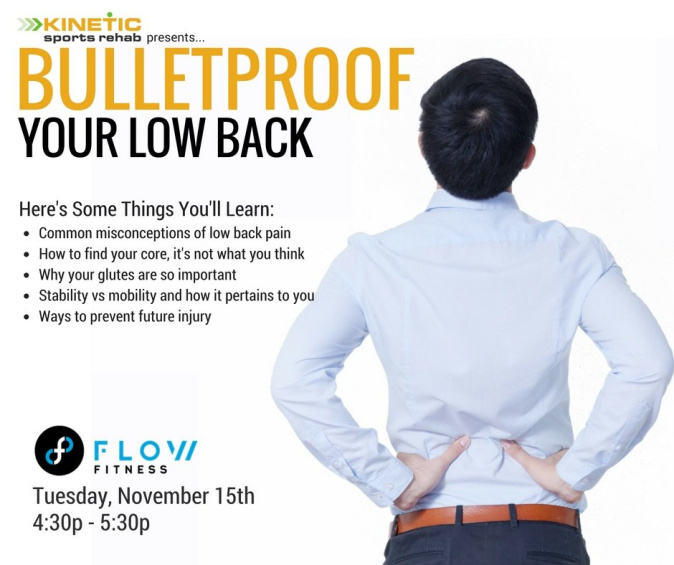 CategoriesEvent
CategoriesEvent CategoriesEvent
CategoriesEventTricks for Eating Healthy Over the Holiday Season
The holidays are coming and that means plenty of celebrations and gatherings of family and friends. Sitting and breaking bread, enjoying traditional dishes, and making memories are all a part of the season. But how do you participate and relish the season but not over-indulge? We are going to share some great approaches that will help you enjoy the holidays and not feel deprived, yet stay on track with your commitment to a healthy lifestyle.
- Remind yourself that you can eat healthy most of the time: It is not a matter of all in or all out. You can make the choices for fresh, wholesome food most of the time, and save those indulgences” for the parties or special holiday events.
- Look ahead: When you know there is an office party mid-week, and another holiday event on the weekend, “schedule” yourself some indulgences, while at the same time “schedule” the rest of the days for staying on track. This approach helps you to not be making decisions in the moment and staying in control. You are less likely to completely fall off the wagon.
- Party ahead: That is have a pre-party at home with some healthy options such as nuts, fruit, and proteins. Arrive satisfied and your plan won’t get de-railed.
- Plan for your workouts: You may splurge a bit on your treats, but if you enter your workout times into your calendar as appointments with yourself, you feel less defeated and getting back full on your nutrition plan after the holidays will be easier and you are less likely to throw in the towel completely
- Avoid those empty liquid calories. While alcohol is high in calorie count, it also leaves us feeling less satisfied and with reduced self-control, which leads to over-consumption. When you first arrive, choose soda water or lemon water before the meal or even before you leave the house.
- It’s about portion control: Don’t sweat over “banned” foods, instead keep your potions smaller and balanced with the healthier choices for most of the meal and smaller portions for those special foods. Choose the smaller dessert sized plate and decide to just take tastings of your favorites, rather than full scoops or slices.
- Keep that fridge well stocked: Having plenty of fruits and veggies in the fridge and easy to reach for is a great strategy for beating temptation and junk food.
- Planned Indulgences: If you are going to allow yourself those indulgences (and we suggest that you DO!), then promise yourself not to waste those calories on junk that is tasty, yet not important to you. Keep them small and plan your day or weekend to allow for those treats that are truly special and worth the “cheat”.
- Chew gum: Seriously! Make sure to bring along some gum with the plan to pop it in your mouth once you have finished your plate. You are waaaay less likely to snack once you have a nice clean palette and fresh breath.
- Think about your emotional triggers around food and especially around the holidays. If you have identified those, you are less likely to feel blindsided when your great aunt makes her annual comment that drives you to the dessert table. It helps to understand the issues that factor into over eating and the knowledge that your triggers: emotional eating is consuming in response to feelings instead of true hunger.
Remind yourself with notes on your mirror that you are choosing these strategies and it is a matter of your game plan and not a cause for feeling deprived. Incorporate these strategies and decide on a good mental approach that will go a long way in defining the holidays as a success, rather than a season to recover from in January.
Featured photo source: Pixabay.com
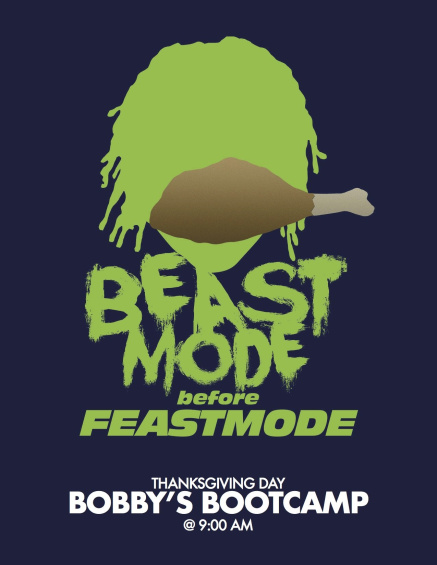 CategoriesEvent
CategoriesEventThanksgiving Day Turkey Burn Bootcamp with Bobby at 9am
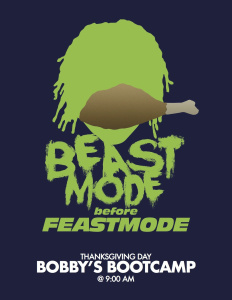 Beastmode before Feastmode!
Beastmode before Feastmode!
Start your Thanksgiving off right and experience a complete head-to-toe workout. This bootcamp incorporates endurance and strength training, while utilizing free weights, medicine balls, resistance bands, bosu balls, and the most important piece of workout equipment: your body weight!
All fitness levels are welcome. The instructor will help with all progressions and regressions. Come to Bobby’s Turkey Burn Bootcamp ready to work, sweat, and smile.
Thursday, November 24th at 9am. 60 minute class.
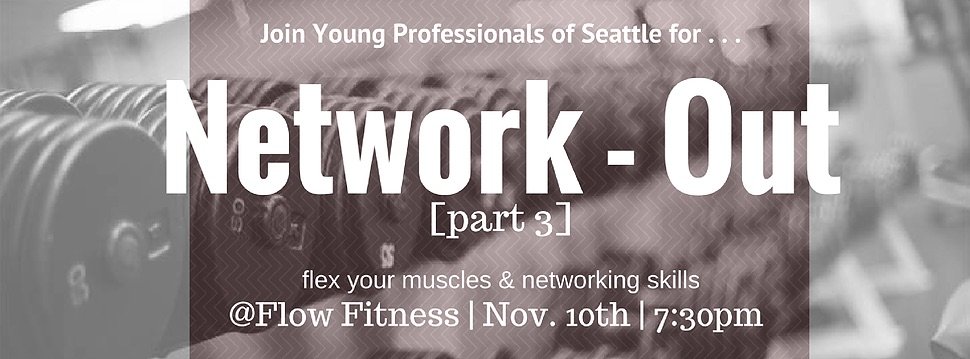 CategoriesEvent
CategoriesEventNetwork-Out [part 3] with Young Professionals of Seattle, November 10th
Young Professionals of Seattle presents: Network-Out [part 3]
Pick what fits you! You will have your choice of two different classes – ‘Cycle Circuit’ or ‘Yoga’; perfect for anyone who wants to get out of that ‘workout rut’ and into a healthy body. These classes are open to all fitness levels. Each class starts at 7:30pm so come a little bit early (so you don’t miss a second).
Afterwards you can enjoy some hosted drinks/healthy sandwiches (thank you Homegrown) all while socializing and mingling with your fellow young professionals in the awesome gym, Flow Fitness!
Thursday, November 10th at 7:30pm (both classes)
Registration and more information here.
Variety – Not Always Your Best Bet.
One of the reasons people love Flow Fitness is the seemingly limitless options we have regarding membership types, classes and personal-training packages. Let’s face it, people love variety, and the more options people have, the more likely they are to stay members. People also evoke this philosophy when it comes to their training and literally change their routine every time they come in or beg their trainer to “mix it up” during sessions.
In theory, constant variety may sound like a good idea as you eliminate “boredom” and promote “muscle confusion” (which is an overrated concept not backed by research as a superior method of training). However, too much variety in your training program could actually put a damper on your results as you will have a difficult time tracking your progress in certain movements (essentially you’ll never know what is working in your program and what is not). Further, this lack of consistency in certain exercises can lead to injury, as you really need to repeat various movements several thousand times to ensure safe execution. Conversely, people that come in and do the exact same routine every single day for several months will find diminishing returns as the body quickly adapts to the “stress” it endures and you find yourself at the same level of fitness you started at. Regardless of which category you fall into, neither is a favorable long-term option for success
The recipe for success should include a training plan that promotes consistency of exercises with small “tweaks” made along the way to ensure that the body continues to adapt over a three-to-six-week period (after which you will want to change your training plan). Though three to six weeks may sound like a long time to focus on the same routine, there are some small changes you can make to your workout that will pay huge dividends in the long run. Below we have listed some of the main variables you can change to keep your workout fresh without completely revamping your day-to-day workouts.
Volume: Volume is a great way to “shock” the system into adapting through varying the amount of reps and sets done in a workout (assuming you use a similar weight). For example, if you are the type of person who does the same routine of three sets of 10 of 100 pounds on your squat, you can spice it up by increasing the number of sets to 6 (yes I said 6). This increases your volume of training from 30 reps to 60 reps and the body will adapt in order to handle much higher volume in the future. You can also get similar effects (up to a certain point) if you increase the number of reps of a particular exercise (this is more applicable for body weight training).
Intensity: When we use the word “intensity,” we are talking about the amount of resistance lifted. Using our 100-pound squat as an example, we can increase the intensity of the exercise by increasing our weight by 10 percent or 10 additional pounds. In the case of increased weight, your total volume may go down, but the heavier weight will spark additional neural adaptations as well as promote additional muscle recruitment, leading to further physical adaptions without changing the type of exercise.
Rest Time: This is often an overlooked variable that people really don’t factor into their training program, but should. Rest intervals are crucial, especially if you are trying to increase your intensity (remember, intensity refers to the amount of resistance lifted). A “refreshed” nervous system is crucial if you want to push more weights multiple times and it is recommended you rest between two to five minutes if you are attempting big lifts. To have more of a conditioning effect, shorten your rest period to between 30 and 90 seconds.
Time Under Tension: T.U.T training (also known as cadence training) is another method of adding variety to your training program. The basic concept is: The longer we keep the muscle under tension, the more the body will have to adapt to these new demands. To get an idea of how this works, go back to your 100-pound squat: During the down phase of the squat, slowly go into your squat with a four-count cadence. At the bottom, hold this position for a one-count cadence, and as you begin the upward phase, go at a two-count cadence (this equals a time under tension of approximately seven seconds). Once at the top, immediately go into your downward phase again for your second rep. More likely than not you won’t be able to hit the 10 reps at this cadence, but the amount of “time” spent under stress should more than make up for the lower rep count.
Try changing some of these variables in your current routine before you jump ship on what you are doing, and see your results improve drastically!
Back Pain. Got some?
Back pain: an epidemic, that seems to be spreading like wildfire. It’s not contagious, in the traditional sense, but at this point it has been said that 85 percent of all people will suffer moderate to severe back pain at some point in life. It is one of the biggest causes of disability — yet it is mostly preventable.
In the article “How Back Pain Took Over the World,” Olga Kahzan writes, “The things that make us low-level miserable are now more likely to be simple aches and pains, rather than frightening, communicable diseases like diarrhea. That’s encouraging, but it’s still a little sad. People all over the world increasingly live long, great lives, only to spend their golden years slathered in Icy Hot.”
It doesn’t have to be that way. While many people will look for a pill, surgery or even a back brace to fix their symptoms, your best bet is to address the cause. Take preventative action today, and live your latter years without so much Icy Hot. Here are a few ideas:
- Get more exercise: If your back hurts, you may think the best way to get relief is to rest and limit exercise. Perhaps spend some time on the couch. A day or two of rest may help, but more than that may not alleviate the pain. Regular physical activity can help ease inflammation and muscle tension.
- Watch your weight: Carrying extra pounds, especially in your midsection, can make back pain worse by shifting your center of gravity and putting strain on your lower back. Staying within ten pounds of your ideal weight can help control back pain.
- Posture. Posture. Posture: Think about having a long spine, as if someone were pulling you up from the crown of your head. Keep your shoulders in line over your hips and relax. Keep your chest and your ribs in check (don’t puff them out). Don’t slump at your desk or slouch while you stand. In addition, try not to sit or stand in one position for long periods of time. Move around!
- Be careful how you lift: Don’t bend over from the waist to lift heavy objects. Bend your knees and squat, pulling in your stomach muscles and holding the object close to your body as you stand up.
- Avoid high heels: They can shift your center of gravity and strain your lower back. Stick to a minimal shoe or a 1-inch heel. If you must go higher, bring along a pair of flat shoes and slip into them when you feel any pain.
Do you have back pain? If so, what might be the cause?
Take steps today so that you can move more easily into your future.
The Magic Bullet
What if I told you I had a magic bullet, one that might cure obesity and cardiovascular disease? Would you want to know what it is?
Listen close, and I’ll tell you:
The magic bullet is exercise. And we’re not talking running a marathon or spending hours at the gym. A brisk 20-minute walk each day reduces the risk of coronary disease by 30 to 40 percent. Just 20 minutes!
In the article “Regular Physical Activity: A’Magic Bullet’ for the Pandemics of Obesity and Cardiovascular Disease,” professors from Florida Atlantic University have concluded that regular physical activity is the closest thing to a magic bullet to combat the epidemic of obesity and cardiovascular disease.
Here’s the crazy thing though: Only 20 percent of Americans meet the recommended levels of regular physical activity and about 64 percent don’t engage in any physical activity.
“If regular physical activity were a pill, then perhaps more people would take it,” wrote the article’s co-author, Dr. Charles H. Hennekens.
So why don’t people exercise more regularly?
Two main reasons were suggested:
1) Time and effort needed for regular physical activity
2) Limited knowledge about the immediate and long-term benefits of regular exercise
For years, we’ve been sold diets. So much so that “there are a lot of misperceptions about the role of regular physical activity, caloric intake and calories burned during exercise,” wrote co-author Steven Lewis. “And, as a result, dieting has been recommended as more practical for weight control than regular physical activity, and this is a big problem.“
If the goal is to simply lose weight, diet only may get you there, but it’s tough to maintain progress. Exercise is key. With physical activity, you gain lean muscle mass, which increases your body’s metabolism and resting calorie burn, which help in achieving and maintaining weight-loss goals. Ideally, regular physical activity would include cardio as well as resistance training, such as lifting weights.
The benefits of resistance training include the prevention or limitation of age-related sarcopenia, improved maintenance of muscle-mass strength and a decreased risk of osteoporosis-related bone fractures, falls, physical disability and mortality.
The bottom line: Cardiovascular disease is now the leading killer worldwide. The article cites that the lack of physical activity accounts for 22 percent of coronary heart disease, 22 percent of colon cancer, 18 percent of osteoporotic fractures, 12 percent of diabetes and hypertension and 5 percent of breast cancer cases. Furthermore, physical inactivity accounts for approximately 2.4 percent of U.S. health-care expenditures, or approximately $24 billion a year.
While awareness and support to fight diseases increase, the lack of sufficient physical activity by 80 percent of the population goes fairly unnoticed.
Support from both corporations and society is critical to building awareness. Companies need to offer their employees incentives and opportunities to incorporate physical activity in their daily lifestyle. Society must embrace physical activity to the point where it becomes the norm.
How will you find twenty extra minutes to move your body today?
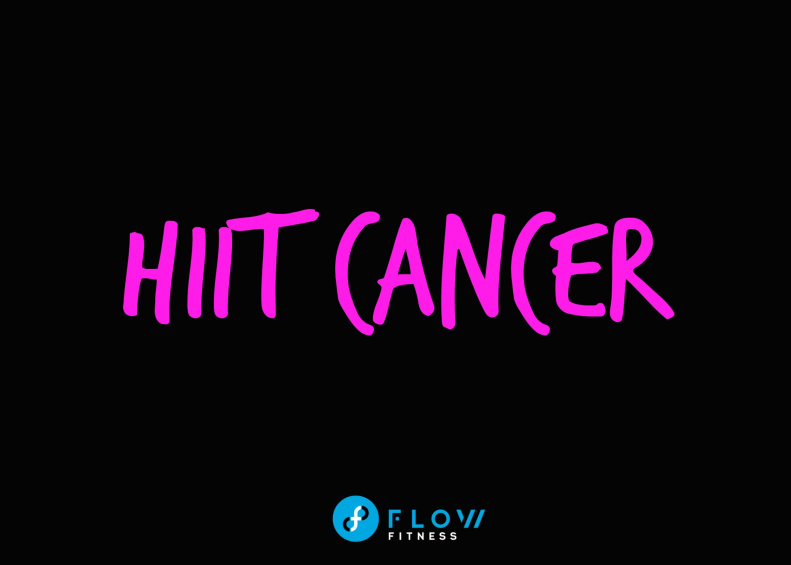 CategoriesEvent
CategoriesEventHIIT Cancer – October 27th at 6:30pm
HIIT Cancer – a workout for the cure party. October 27th, at 6:30pm our regular Tabata class will be dedicated to a breast cancer beat down. Don a pink shirt (any pink shirt will do), and come work out. Beer & Cider provided after class for a special cool down.
Members are free, guests may attend with a donation.
Register with eventbrite here.
*donations directly benefit National Breast Cancer Foundation, Inc.
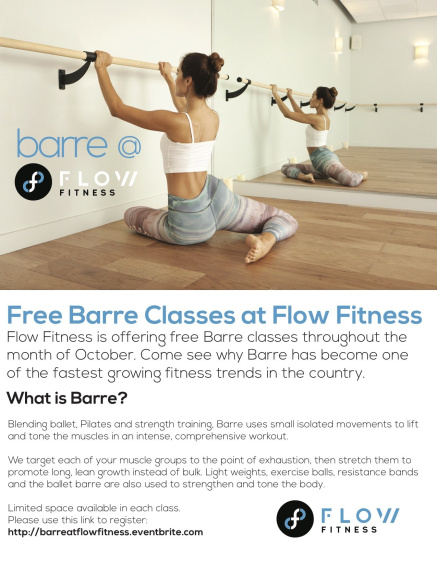 CategoriesEvent
CategoriesEventFree Barre at Flow in October
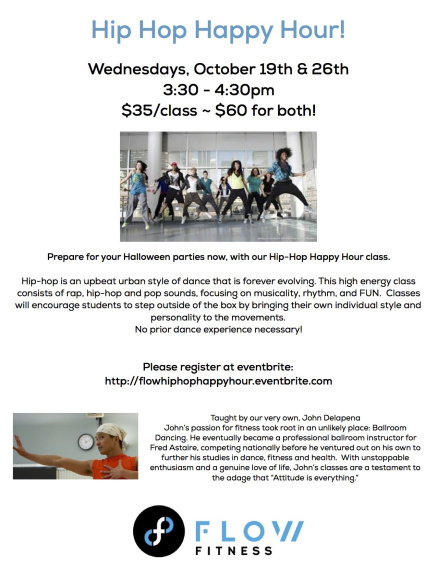 CategoriesEvent
CategoriesEvent